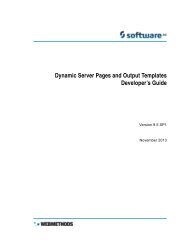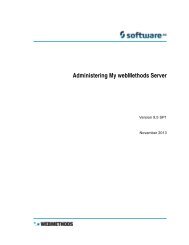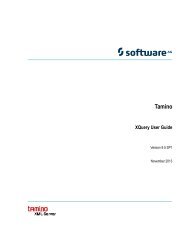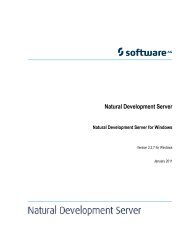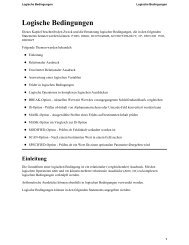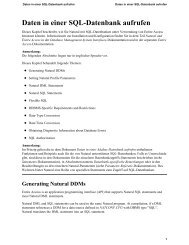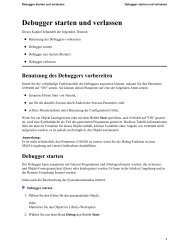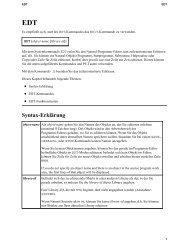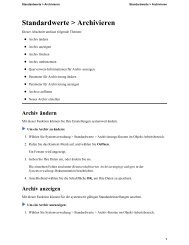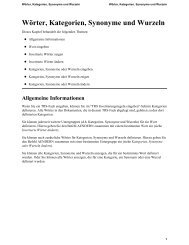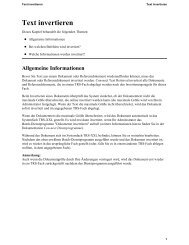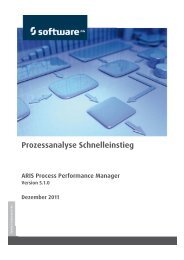Ending Entire System Server - Software AG Documentation
Ending Entire System Server - Software AG Documentation
Ending Entire System Server - Software AG Documentation
Create successful ePaper yourself
Turn your PDF publications into a flip-book with our unique Google optimized e-Paper software.
Common <strong>Entire</strong> <strong>System</strong> <strong>Server</strong> Features<br />
This section describes common <strong>Entire</strong> <strong>System</strong> <strong>Server</strong> features.<br />
Running <strong>System</strong> Automation Tools in <strong>Entire</strong> <strong>System</strong> <strong>Server</strong><br />
General<br />
<strong>Entire</strong> <strong>System</strong> <strong>Server</strong> (ESY) enables the operation of <strong>System</strong> Automation Tools,for example, <strong>Entire</strong><br />
Output Management (EOM), <strong>Entire</strong> Operations ( EOR), as subtasks in the address space of <strong>Entire</strong><br />
<strong>System</strong> <strong>Server</strong> (z/OS, z/VSE) or as pseudo subtasks, that is, standalone tasks (BS2000/OSD). These<br />
<strong>System</strong> Automation Tools (SAT) are applications on the basis of Natural, which require a Batch-<br />
Natural as engine.<br />
SAT products are started by means of ESY startup parameters.<br />
Until now, interaction between ESY and SAT or EOM, EOR, etc. has only been possible on a<br />
rudimentary basis, as the operator command SHUTDOWN has been the only command to terminate<br />
part or all of the SAT environment.<br />
The configuration of the required batch Natural task was not very flexible at least under<br />
BS2000/OSD.<br />
This section offers an overview of the interfaces between ESY and SAT and deals with the configuration<br />
in the overall context.<br />
Activating SAT during Start of <strong>Entire</strong> <strong>System</strong> <strong>Server</strong><br />
Start of SAT under BS2000/OSD<br />
As Natural subtasks are implemented as separate tasks under BS2000/OSD, the definition of job<br />
control instructions is required. The ESY startup parameter JOBNATSUB specifies the location of the<br />
SAT-ENTER job. Apart from that, the following can be defined:<br />
■ the attributes for the SAT-ENTER job (PRMNATSUB parameter)<br />
■ the maximum number of pseudo Natural subtasks (NATNUMSUB parameter)<br />
■ the input control of dynamic Natural parameters (NATDYNPAR parameter)<br />
The SAT-ENTER job, which is started during the initialization of <strong>Entire</strong> <strong>System</strong> <strong>Server</strong>, reads initialization<br />
data and starts the configured SAT products according to the set up definitions.<br />
In general, a distinction must be made between the start of the SAT products via the macros<br />
SATSTART TYPE=BATCH and SATSTART TYPE=SUBTASK. To obtain a complete interaction of the SAT<br />
products with ESY, the SATP member (see SAT Installation and Customization for details) for the<br />
SATSTART macros should always use the TYPE=SUBTASK type. This ensures that both control functions<br />
78<br />
Administration



